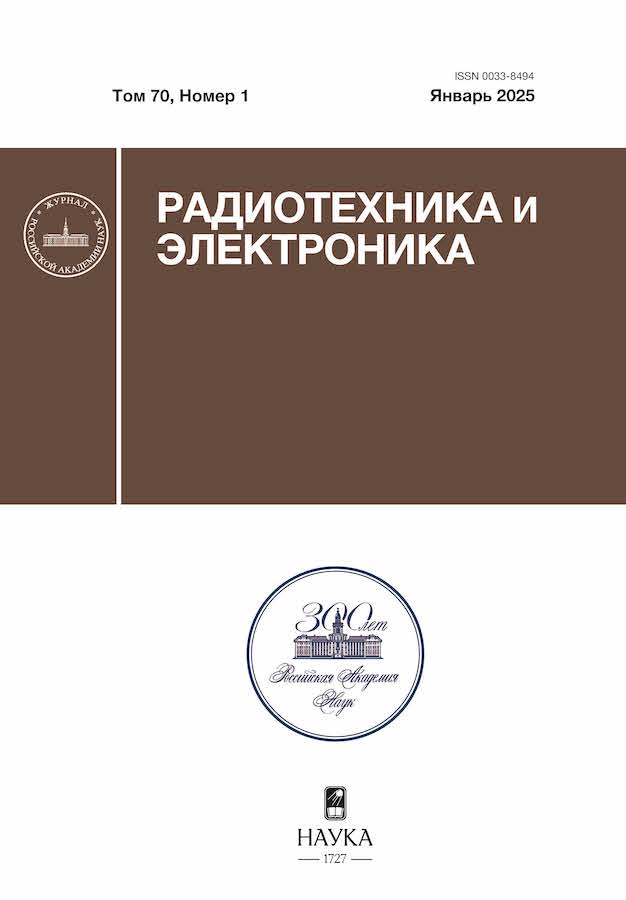Over-range polyconical antenna with gradient dielectric lens
- 作者: Kaloshin V.А.1, Nguyen The Т.2
-
隶属关系:
- Kotel’nikov Institute of Radioengeneering and Electronics RAS
- Moscow Institute of Physics and Technology (National Research University)
- 期: 卷 70, 编号 1 (2025)
- 页面: 12-19
- 栏目: АНТЕННО-ФИДЕРНЫЕ СИСТЕМЫ
- URL: https://innoscience.ru/0033-8494/article/view/684117
- DOI: https://doi.org/10.31857/S0033849425010025
- EDN: https://elibrary.ru/HJULRT
- ID: 684117
如何引用文章
详细
An omnidirectional in one plane polyconical antenna with a torroidal gradient dielectric anisotropic Mikaelian lens, which is made in the form of a set of parallel coaxial disks made of polystyrene of various thicknesses, is proposed and studied using numerical modeling. As a result of the study and optimization of parameters, it was shown that the optimized polyconical antenna with the lens is matched and provides high efficiency in the 40:1 frequency band. The results of numerical modeling are confirmed by the results of measurements of the manufactured antenna prototype.
全文:
作者简介
V. Kaloshin
Kotel’nikov Institute of Radioengeneering and Electronics RAS
编辑信件的主要联系方式.
Email: vak@cplire.ru
俄罗斯联邦, Mokhovaya St., 11, build. 7, Moscow, 125007
Тхань Nguyen The
Moscow Institute of Physics and Technology (National Research University)
Email: vak@cplire.ru
俄罗斯联邦, Institutsky per. 9, Dolgoprudny, Moscow region, 141700
参考
- Kалошин В.А., Мартынов Е.С., Скородумова Е.А. // РЭ. 2011. Т. 56. № 9. С. 1094.
- Uskov G.K., Smuseva K.V., Seregina E.A., Bobreshov A.M. // 2022 IEEE8th All-Russian Microwave Conference (RMC). Moscow. 23–25 Nov. N.Y.: IEEE, 2022. P. 191.
- Titan Z., Sievert B., Eube M. et al. // 2022 52th Europ. Microwave Conf. (EuMC). Milan. 27–29 Sept. N.Y.: IEEE, 2022. P. 612.
- Zhang Z.-Y., Leung K.W., Lu K. // IEEE Trans. 2023. V. AP-71. № 1. P. 58.
- Dubrovka F.F., Piltyay S., Mоvchan M., Zakharchuk I. // IEEE Trans. 2023. AP-71. № 4. P. 2922.
- Kалошин В.А. // ДАН. 2016. Т. 470. № 2. С. 253.
- Pытов С.М. // ЖЭТФ. 1955. Т. 2. № 3. С. 605.
补充文件





















